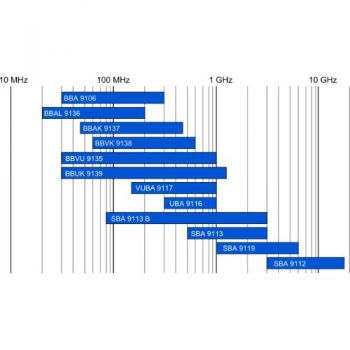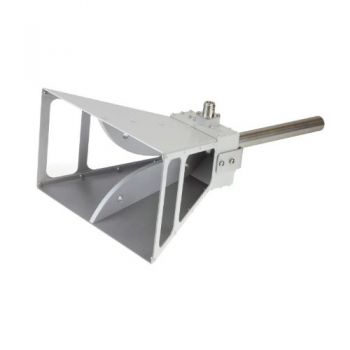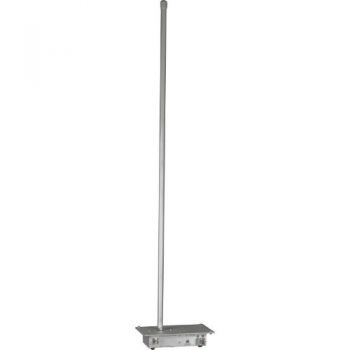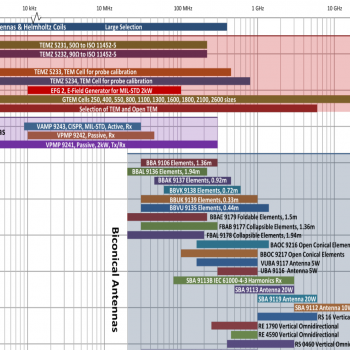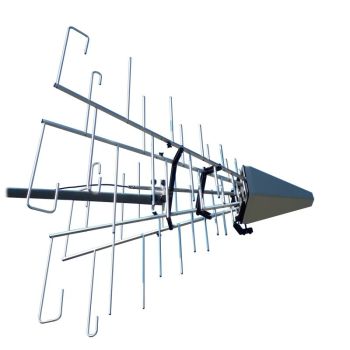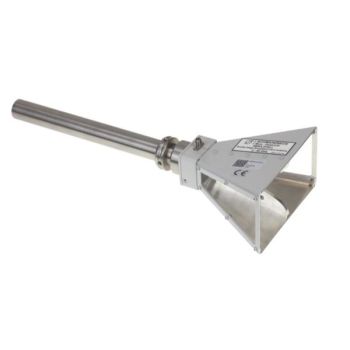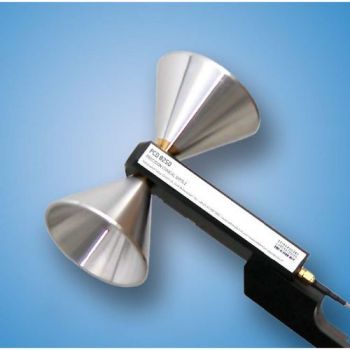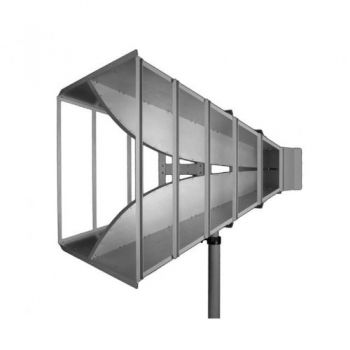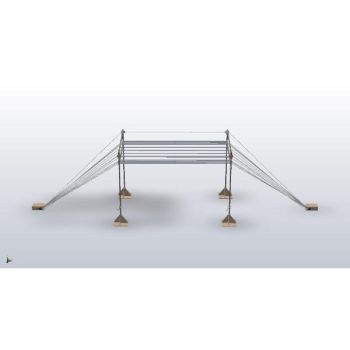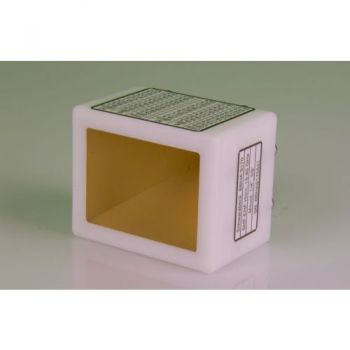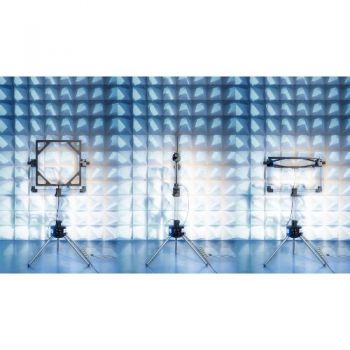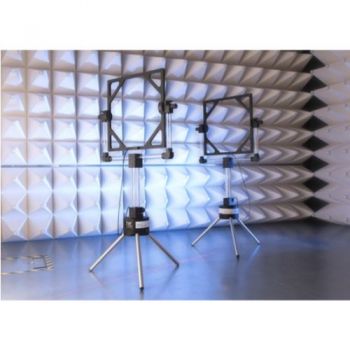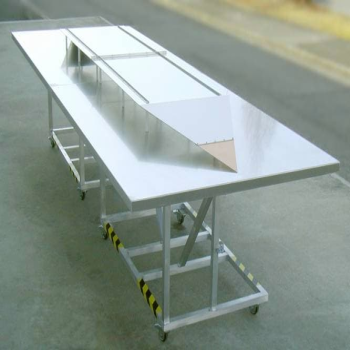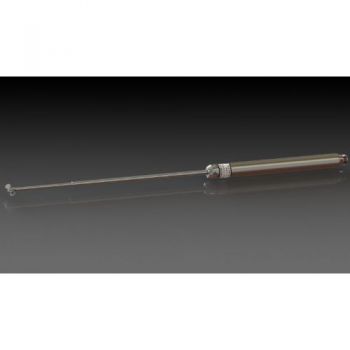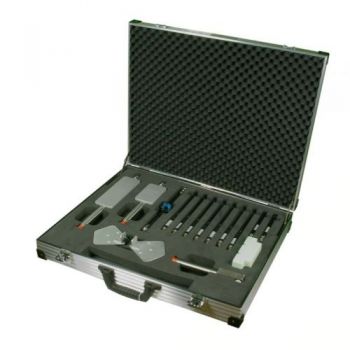
VW TL 82166 2016-02 7.3 Antenna Set, 26 MHz - 6 GHz
- Tuned sleeve antennas are tuned half-wave dipoles,
- Axis aligned as a straight extension of the coaxial feed cable
- According to Volkswagen standard TL 82166:2009-05
- 20 Watts
- Type N & BNC
VW TL 82166 2016-02 Antenna Set, 26 MHz - 6 GHzThe antenna kit for testing immunity against hand-held radios acc. to Volkswagen standard TL 82166:2009-05 consists of the following parts: For the frequency range, 26-174 MHz matched normal mode helical antennas are used. For frequencies from 360 MHz and beyond the broadband, SBA 9113 mini version with 420 NJ elements is used. For frequencies up to 6GHz SBA 9119 mini with 422 NJ elements. The included polystyrene “spacer 50” & "spacer 30" allows positioning the 420 NJ or 422 NJ respectively elements at a distance of 50 mm or 30mm respectively from the test object. A small and a large metal case are used as a mobile unit mock-up. On the underside, there is a tube 22 mm with an indexing ring that can be used for holding the antenna. The sockets of the mobile unit mock-up are through connected 1:1. To be able to connect both, the SBA 9113 with N connector and the NMHA antennas with BNC connectors with the mock-up units there are 2 adapters: N-male to BNC female and N-male to N-male. To avoid sheath currents the set is accompanied by an MSS 9630 sheath current blocking cable with ferrites. This cable should be connected directly to the metal case. It is about 30 cm long and equipped with N-male and N-female connectors. All parts are housed in a carrying case with a foam insert to prevent damage during transp
VSWR of NMHA antennas Especially at low frequencies, the VSWR-curve of good impedance matching is very narrow and extremely sensitive if the antenna is approached environmental surfaces. In most cases, it is best to ground connect the coaxial cable at the antenna feed point. Furthermore, the VSWR is very hand-sensitive at the coaxial cable. The VSWR characteristics of normal mode helical antennas are also extremely dependent on sheath currents on the cable and grounding conditions at the antenna feed point. Normal mode helical antennas were originally designed to transmit information and provide a small and handy antenna size. The antennas are only a fraction of the wavelength. In such an application a geometry-dependent VSWR is of minor importance. If used as transmitting antennas for this standard it is sometimes difficult to fulfill the VSWR requirements. It is then required to vary the allowed factors (cable geometry, braid current blockers, grounding situation, cable length, metal sheets in the vicinity…) until the VSWR requirements are fulfilled. Such problems do not exist with symmetric antennas like dipoles or biconical antennas with a balun. Such antennas however would be very inefficient for the low frequencies or they would be too big for such testing.
Antenna set for mobile radio testing using portable mobile radio units inside the vehicle |



